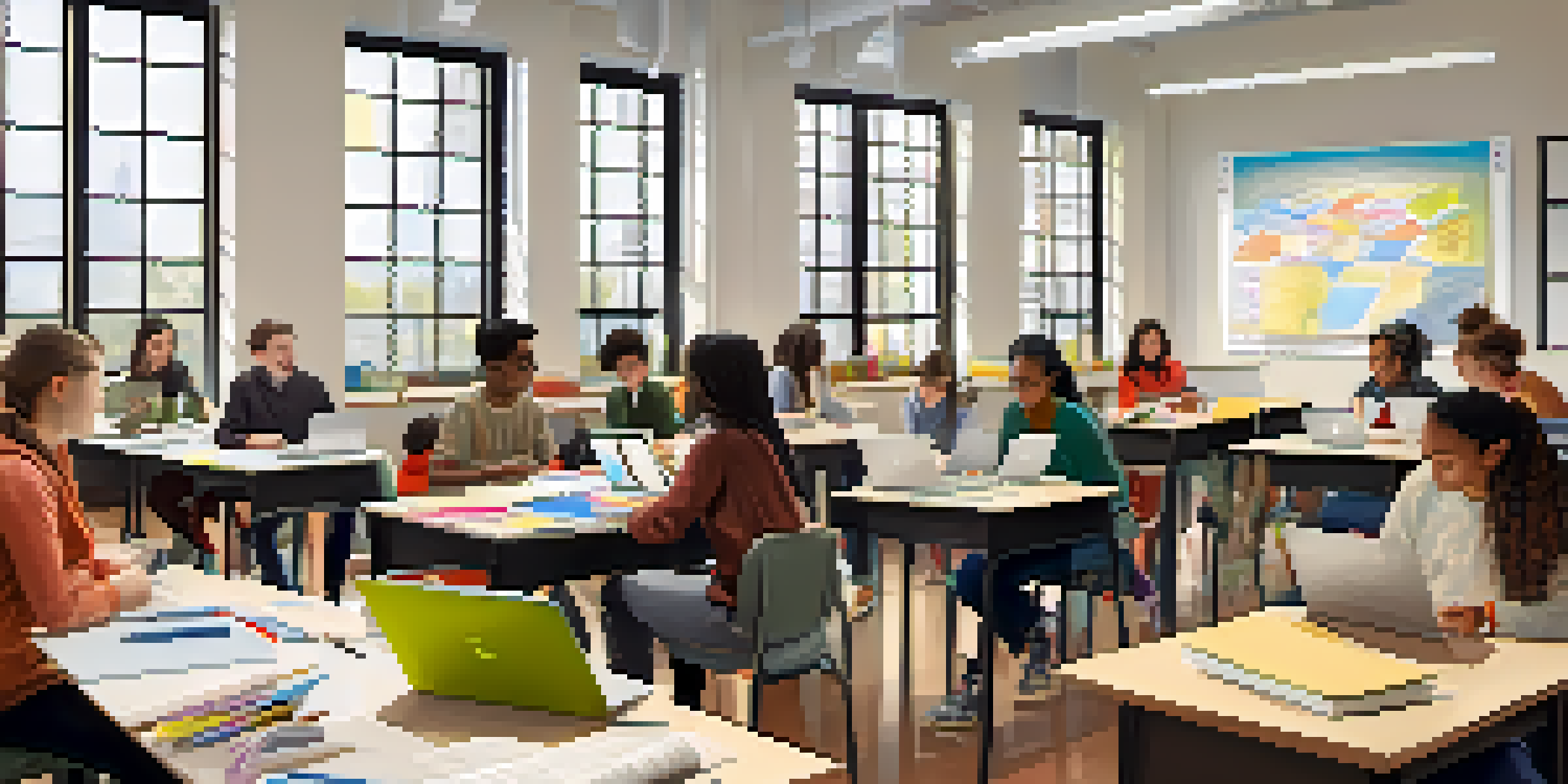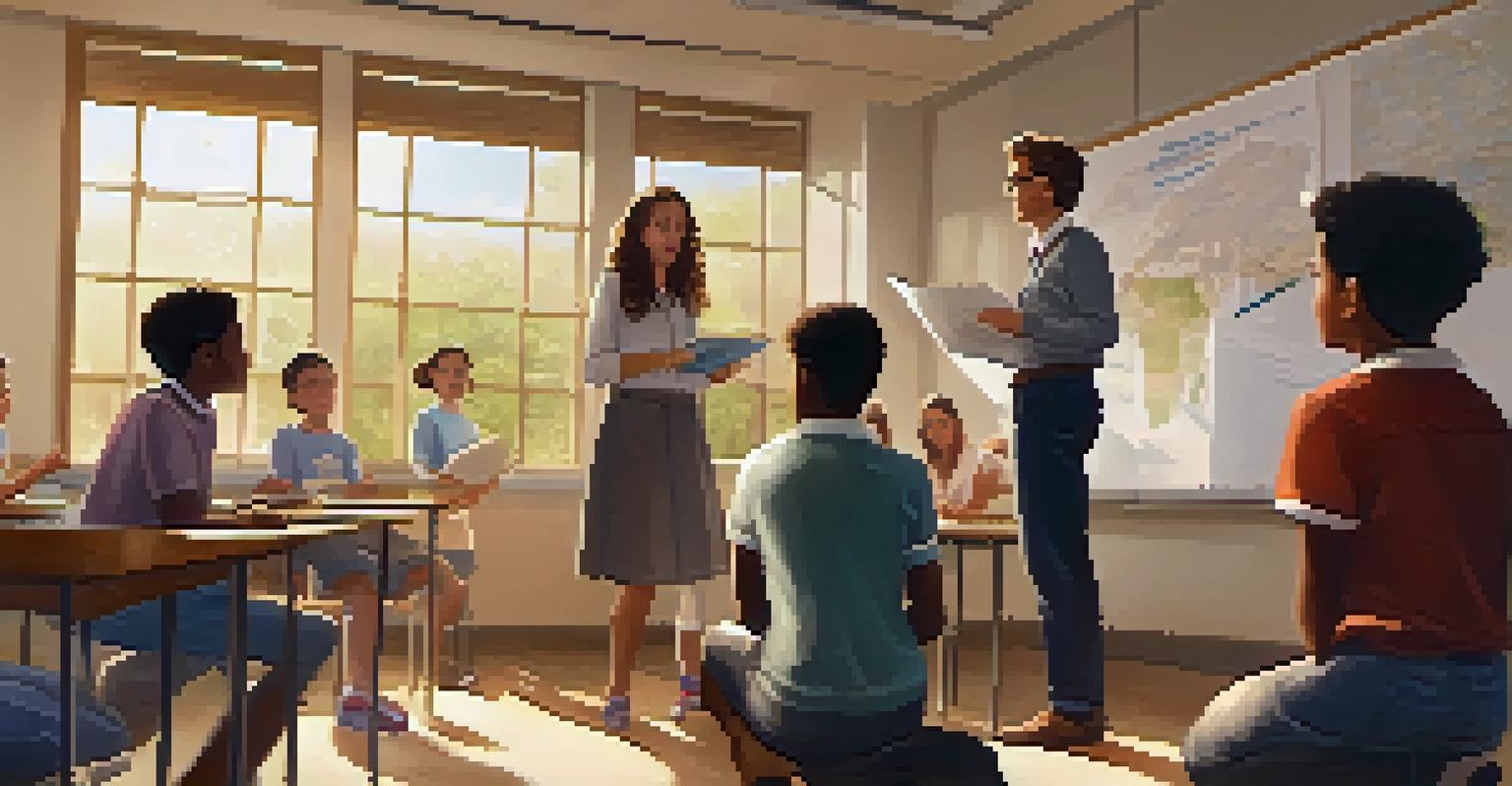Assessing Collaborative Learning: Tools and Techniques

Understanding Collaborative Learning Assessment
Collaborative learning is all about students working together to achieve a common goal. Assessing this type of learning is crucial to ensure that the objectives are met and that each member contributes effectively. It not only measures individual understanding but also gauges the dynamics of group interactions.
Collaboration allows teachers to capture each other's fund of collective intelligence.
When we assess collaborative learning, we're looking at both the outcomes and the process. This means we need tools that can evaluate how well students engage with each other while also tracking their progress towards shared goals. It’s a bit like checking both the recipe and the finished dish in cooking.
Related Resource
Ultimately, effective assessment in collaborative learning helps in refining teaching strategies and enhances student engagement. By understanding what works and what doesn’t, educators can create more effective learning environments.
Key Tools for Assessing Collaborative Learning
There are several tools available that can help educators assess collaborative learning effectively. For instance, peer assessment allows students to evaluate each other's contributions, fostering a sense of accountability. This method not only encourages critical thinking but also helps students learn from their peers.

Another useful tool is the use of rubrics, which provide clear criteria for evaluating group work. Rubrics can outline expectations for individual roles, collaboration, and the quality of the final output. Think of a rubric as a roadmap for both students and teachers, guiding them towards successful outcomes.
Importance of Collaborative Assessment
Assessing collaborative learning ensures that educational objectives are met and that all group members contribute effectively.
Finally, technology can play a significant role in assessment. Platforms that support collaborative projects often include built-in tracking features, allowing teachers to monitor participation and engagement levels over time. This data can be invaluable for providing targeted feedback and support.
Techniques for Effective Assessment
To assess collaborative learning effectively, techniques like observation can be incredibly beneficial. By observing group interactions, teachers can gain insights into dynamics and identify any issues that may arise. It’s like being a fly on the wall, allowing educators to see real-time collaboration in action.
The whole is greater than the sum of its parts.
Another technique involves reflective journals, where students document their experiences, thoughts, and learning processes. This method not only encourages self-reflection but also helps students articulate their understanding of the group's function. It’s similar to keeping a diary, but instead, it focuses on learning journeys.
Related Resource
Incorporating self-assessment is also crucial, as it empowers students to evaluate their contributions and recognize areas for improvement. This practice fosters a growth mindset and encourages lifelong learning, making students active participants in their own educational journey.
The Role of Feedback in Assessment
Feedback is a cornerstone of effective assessment in collaborative learning. Providing timely and constructive feedback helps students understand their strengths and areas for growth. Think of feedback as a compass, guiding learners towards improvement.
Peer feedback can be incredibly powerful, as it allows students to learn from each other’s perspectives and experiences. This not only builds a sense of community but also enhances critical thinking skills. Engaging in this exchange is like having a conversation that opens doors to new ideas.
Tools for Effective Evaluation
Utilizing tools like peer assessment, rubrics, and technology enhances the evaluation process and supports student accountability.
Moreover, incorporating feedback loops—where students can revise and reflect on their work based on input—creates a culture of continuous improvement. This iterative process ensures that learning remains dynamic and responsive to student needs.
Challenges in Assessing Collaborative Learning
Assessing collaborative learning comes with its own set of challenges. One significant hurdle is ensuring fair evaluation of individual contributions within a group. It can sometimes feel like trying to pick out one instrument in a symphony—each is vital, but they work together to create harmony.
Another challenge is the potential for unequal participation, where some students may dominate the conversation while others remain passive. This imbalance can skew assessment results and hinder the learning experience for all involved. It’s crucial for educators to be vigilant and address these dynamics early on.
Related Resource
Lastly, the subjective nature of group work can complicate assessment. What one student views as a valuable contribution might seem less significant to another. Establishing clear criteria and fostering open communication can help mitigate these issues.
Best Practices for Effective Assessment
To navigate the complexities of assessing collaborative learning, adopting best practices is essential. Start by setting clear expectations and objectives for group work, making sure students understand their roles. Clear guidelines create a foundation for success, similar to building a house on a solid foundation.
Encouraging regular check-ins can also help maintain momentum and address any emerging issues. These check-ins can be informal discussions or structured reflections, providing opportunities for students to express concerns and celebrate successes. It’s a bit like tuning an instrument; regular adjustments keep the group in harmony.
Challenges in Group Evaluation
Fairly assessing individual contributions in collaborative settings can be difficult due to potential unequal participation and subjective perceptions.
Lastly, promoting a culture of collaboration and respect is vital. When students feel valued and heard, they are more likely to engage actively and contribute meaningfully. This positive atmosphere enhances the overall learning experience and leads to better assessment outcomes.
Future Trends in Collaborative Learning Assessment
As education evolves, so too do the methods we use to assess collaborative learning. One emerging trend is the integration of artificial intelligence tools that can analyze group dynamics and individual contributions more efficiently. Imagine having a digital assistant that helps you track collaboration without losing the human touch.
Furthermore, the rise of online and hybrid learning environments has prompted educators to explore new assessment methods that suit virtual collaboration. These can include digital portfolios and online peer reviews, which allow for flexibility while maintaining rigorous standards. It’s like adapting a recipe for a different kitchen; you still want to achieve great results.

Looking ahead, the focus will likely continue to shift towards personalized assessments that cater to individual learning styles. This approach not only recognizes diversity in learning but also empowers students to take charge of their educational journeys.